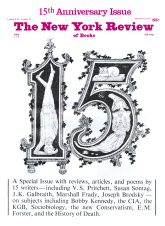Joseph Borkin’s book on the huge chemical combine I.G. Farben is a case study in the relations between business and politics. Formed in 1916 out of the major German chemical companies (among them BASF, Bayer, and Agfa), I.G. Farben has demonstrated an uncanny ability to survive those political regimes with which it was intimately associated. It was able to offer its services to the German Empire in World War I and to Hitler in World War II, always in return for large government contracts and handsome profits. In the first instance, the combine developed and manufactured poison gas, but a combination of luck and shrewd business dealings left it unscathed at Versailles and in a position to support Hitler in the early 1930s in return for his interest in I.G. Farben’s development of a synthetic fuel.
Borkin focuses on the evolving relationship with the Nazis, for I.G. Farben not only supplied the fuel and synthetic rubber needs of the Reich’s armies, but it also shared in the regime’s inhumanity. Citing evidence from the Nuremberg trials, Borkin describes the construction of a giant chemical plant near Auschwitz—called “I.G. Auschwitz”—which was staffed by slave labor. Those prisoners too weak to work for Farben were liquidated with a Farben-supplied poison gas.
Borkin avoids any simplistic suggestion that Hitler was a tool of chemical industry leaders; they were quick to submit to his demands. Rather, his point is that by providing the synthetic resources that helped make Hitler’s imperial schemes possible, and through its use of slave labor, I.G. Farben shared the responsibility, and the guilt, of the regime, and should have been condemned at Nuremberg. In fact, only light sentences were meted out to Farben executives, and though the combine was broken up, its separate branches continue to flourish.
This study shows that I.G. Farben worked closely with Standard Oil during the 1930s, but does not pose larger questions about the collaboration of multinational corporations with one another and with military powers. Borkin, a Washington, DC, lawyer, prefers to let the facts speak for themselves, and he leaves no doubt of how easily the pursuit of profit coexisted with barbarism in the Third Reich.
In defense of the wolf’s singular nature, Barry Lopez has marshaled an extraordinary amount of material: not just refutations of Jack London and evidence of limitations of biologist observers, but also Eskimo perceptions, fables and fairy tale interpretations, historical and religious images, and an admission of his own ill-fated effort with two hybrid red wolves as pets. Lopez’s reverence for the species and his sense of outrage are acute: it is a measure of his intensity that the chapter chronicling the decimation of American plains wildlife (1850-1900) is called “Pogrom.” The particular excesses of the time, when perhaps two million wolves were slaughtered, are referred to as “holocaust.”
What he has done, even more than David Mech in 1970 in The Wolf (which concentrates on one subspecies), is to document man’s irrational, enduring antipathy toward an animal that deserves better treatment, and to challenge the assaults on its character which have persisted long after Linnaeus and Darwin gave animal-watching purpose and direction. Lopez is not pretending that wolves are harmless creatures, but he insists that their complex social organization testifies to unusually strong inner resources, citing the respect of Eskimos for the animal’s survival skills. (Using several examples of formerly unobserved behavior, he suggests that their social system is still evolving.) Not everyone will rush to join his cause, but Lopez has demonstrated incontestably the discrepancy between society’s image of the wolf and its true capacities.
(Notice in this section does not preclude review of these books in later issues.)
This Issue
October 12, 1978



